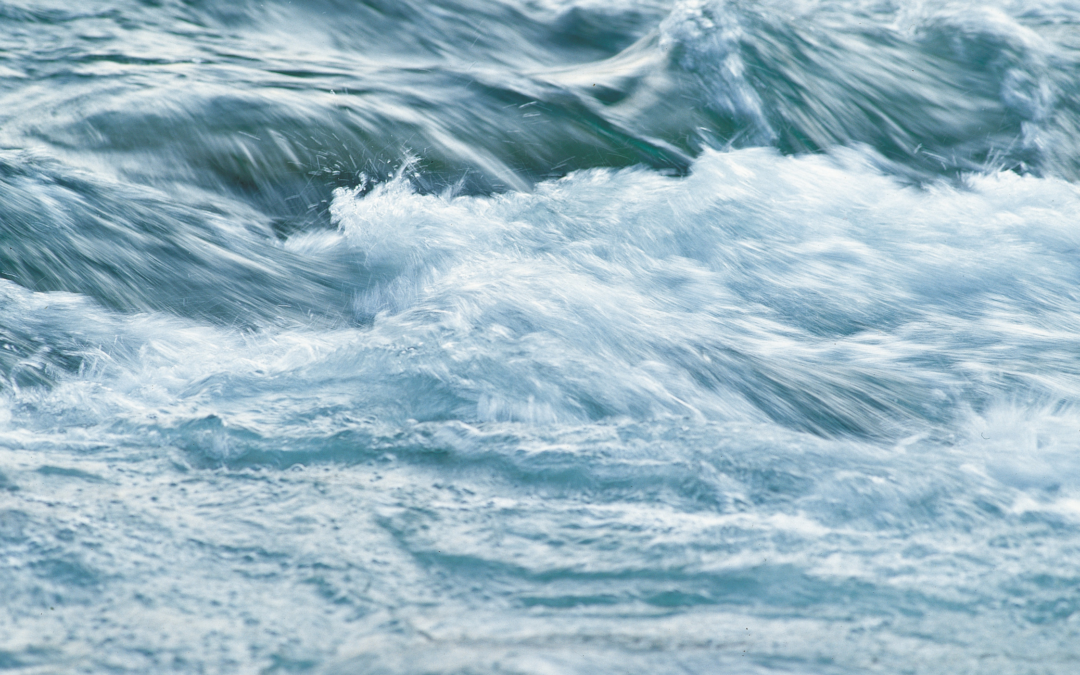
Two events with Dr. Felix Keller - water, ice and music at night

At a time when water scarcity and glacier shrinkage are becoming increasingly pressing issues, two special events in the Engadin region invite you to reflect and marvel.
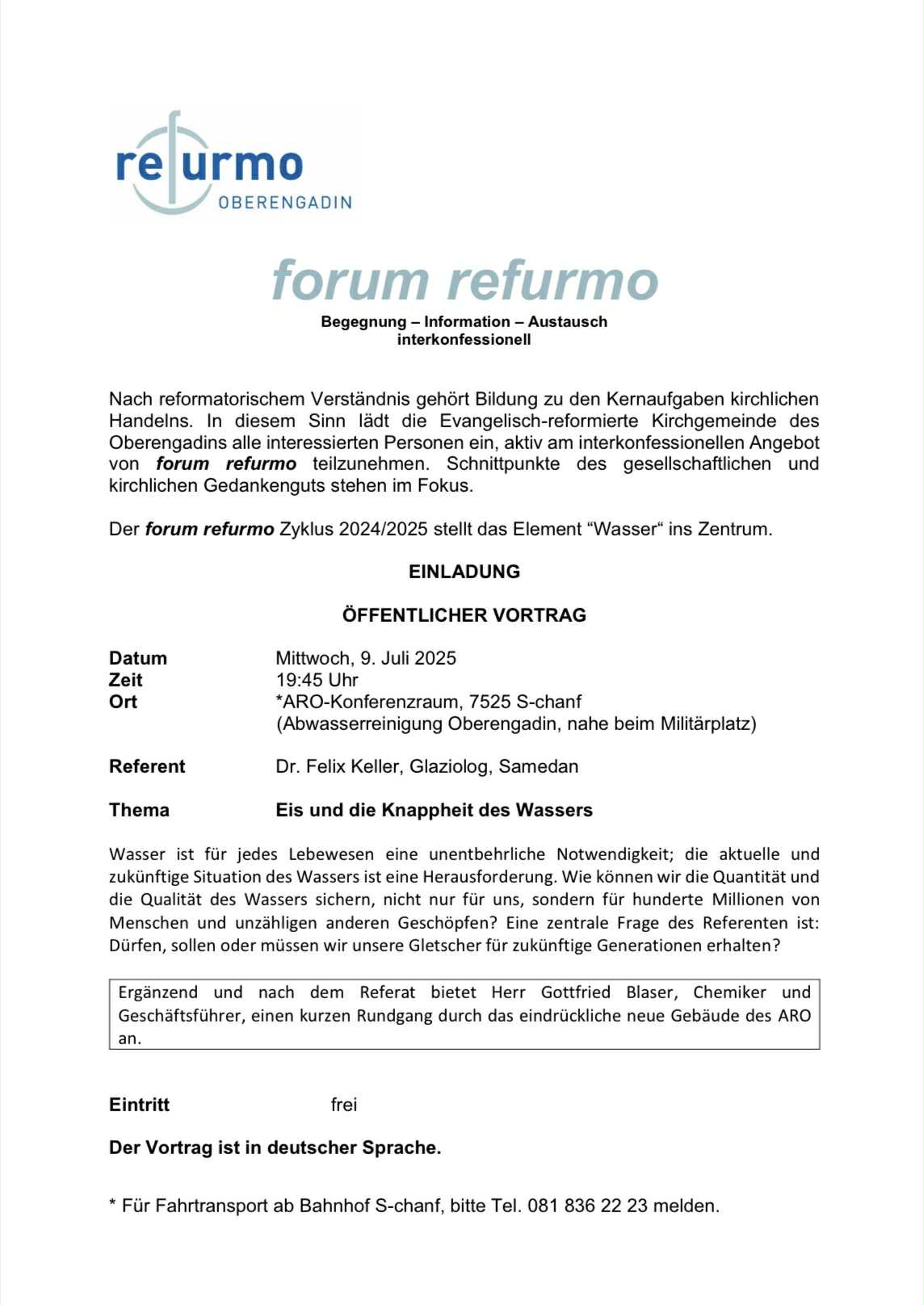
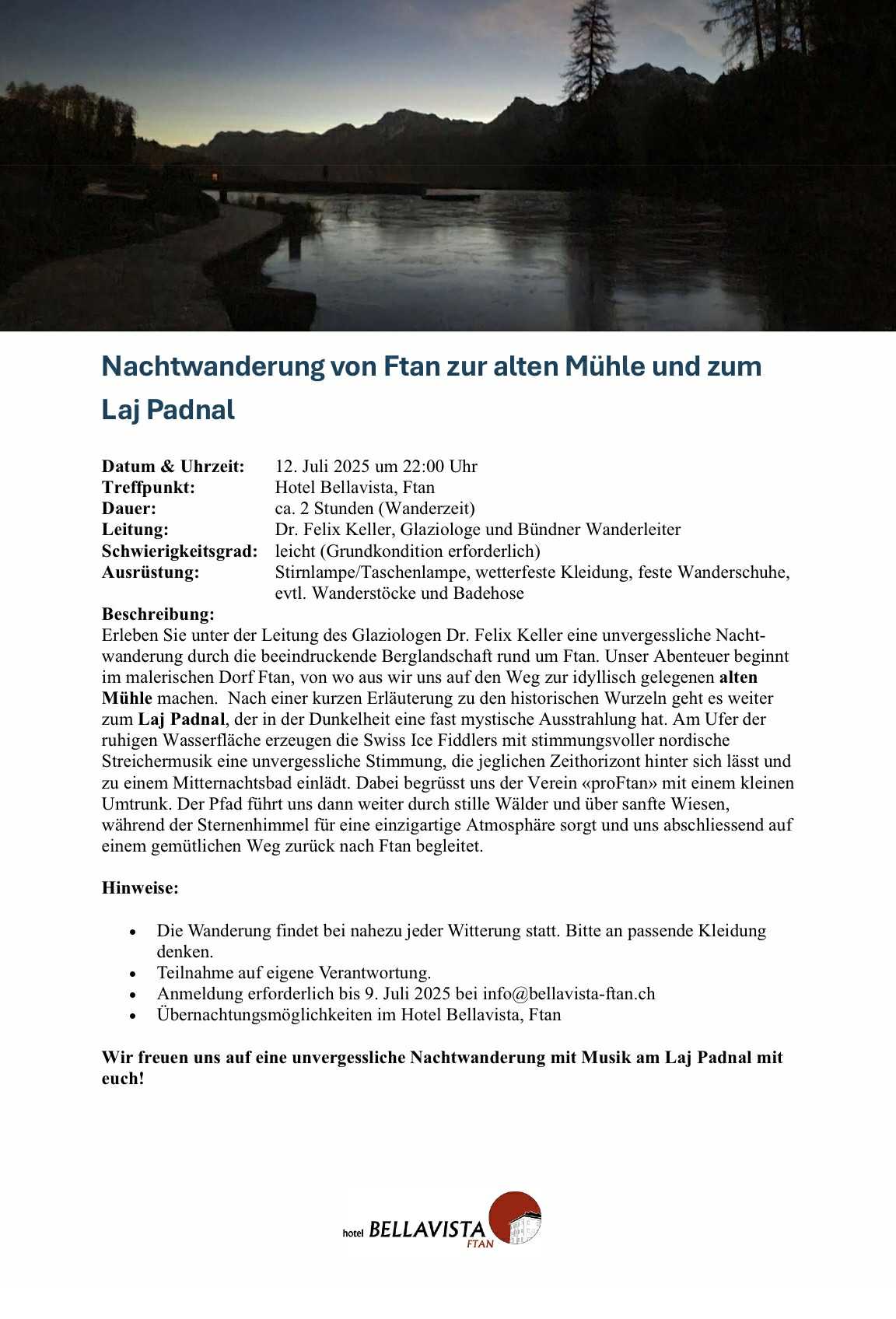


At a time when water scarcity and glacier shrinkage are becoming increasingly pressing issues, two special events in the Engadin region invite you to reflect and marvel.


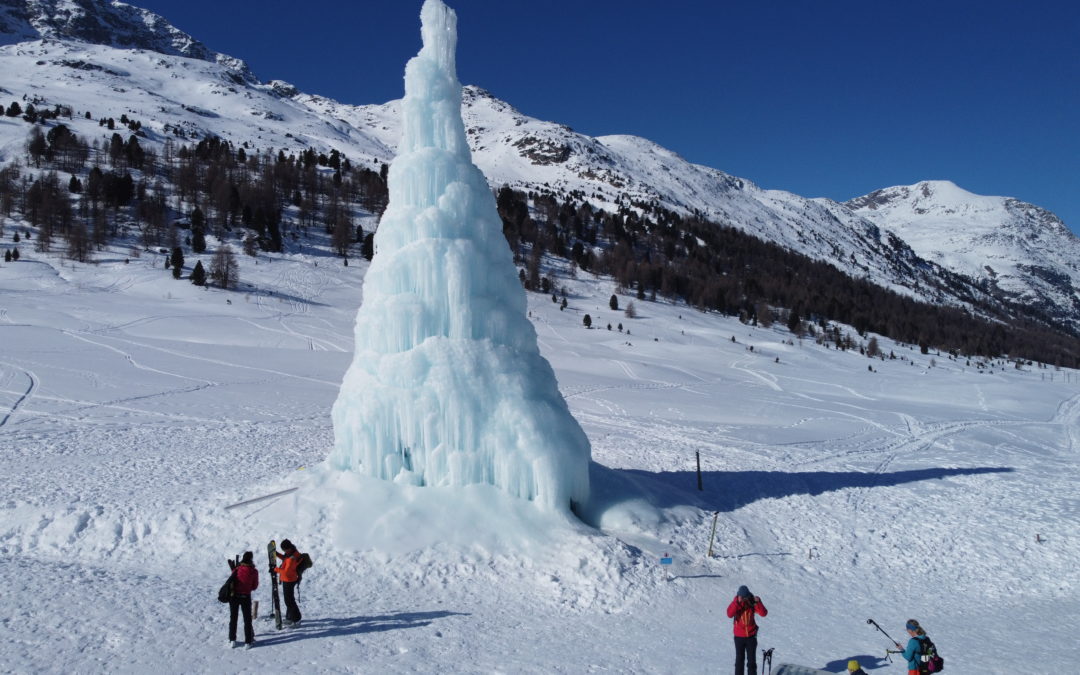
Ice Stupa Festival and film screening Mal bella Val
On Saturday evening, the film screening of “Ma bella Val Vadret da Roseg” took place, followed by a tour of the Ice Stupa with Felix Keller. The film showed the 30 participants the beauty of the glaciers. It shows the melting of the glaciers, which is being intensively researched in the Bernina massif with innovative solutions, as well as Engadin culture, tourism and skiing.
Afterwards, the participants were able to visit the Ice Stupa from the outside and inside. The Ice Stupa is particularly beautiful at night when it is illuminated.
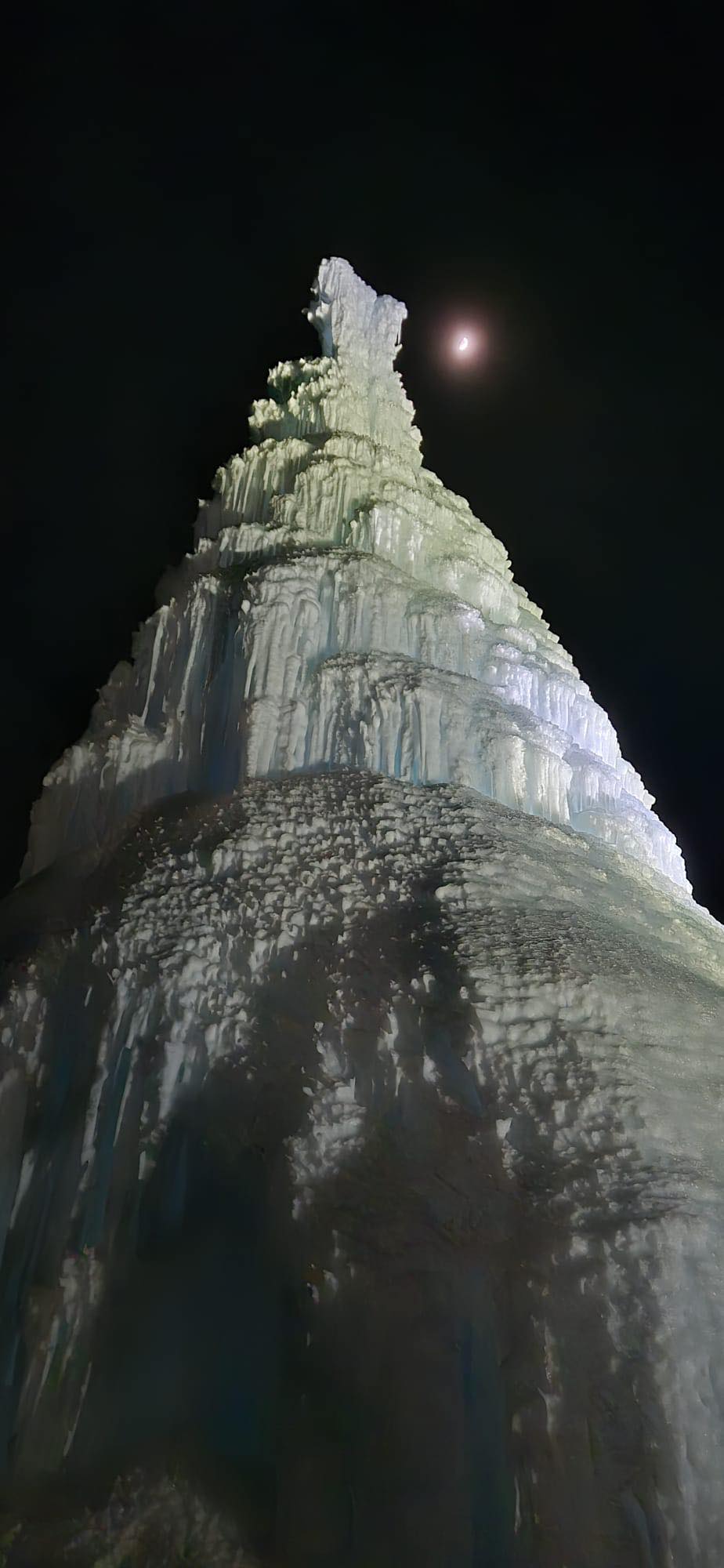
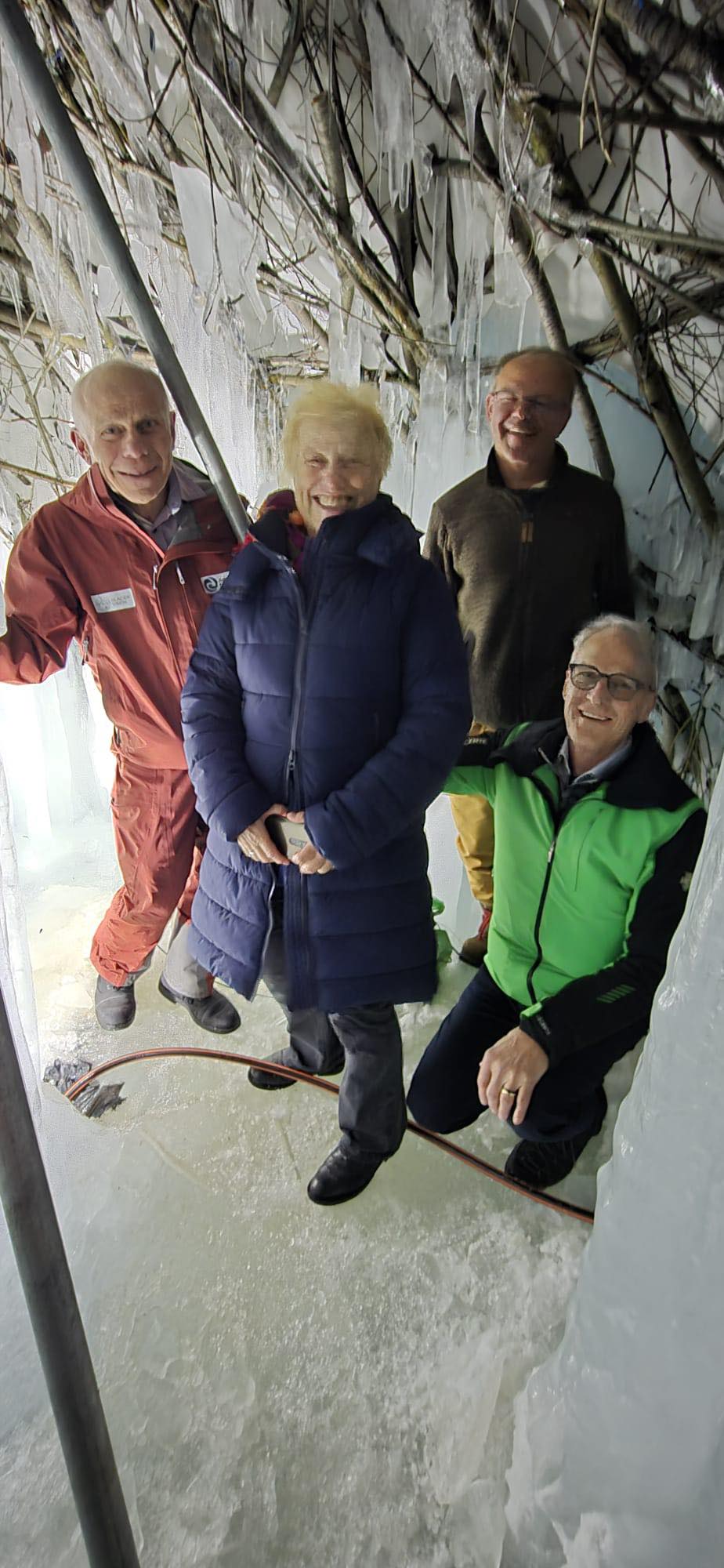
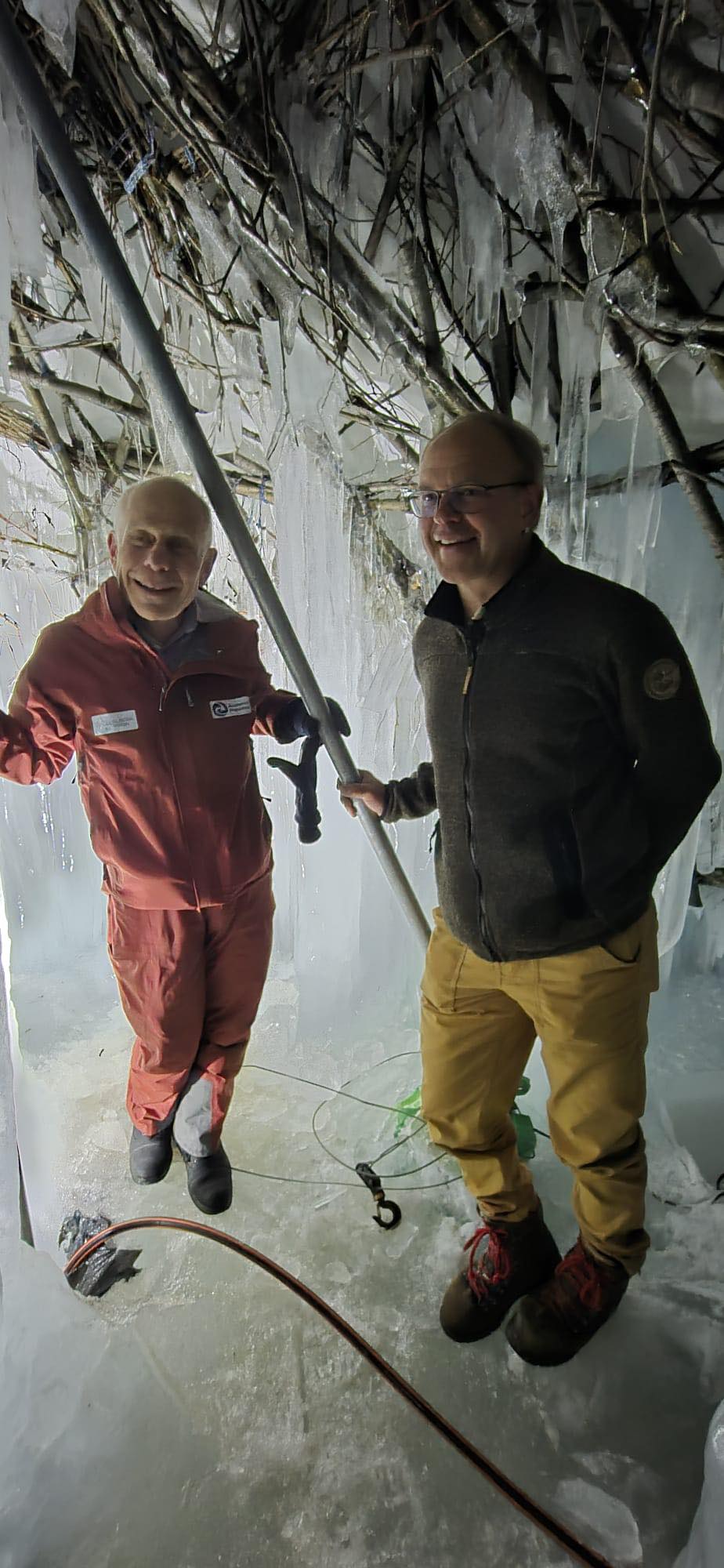
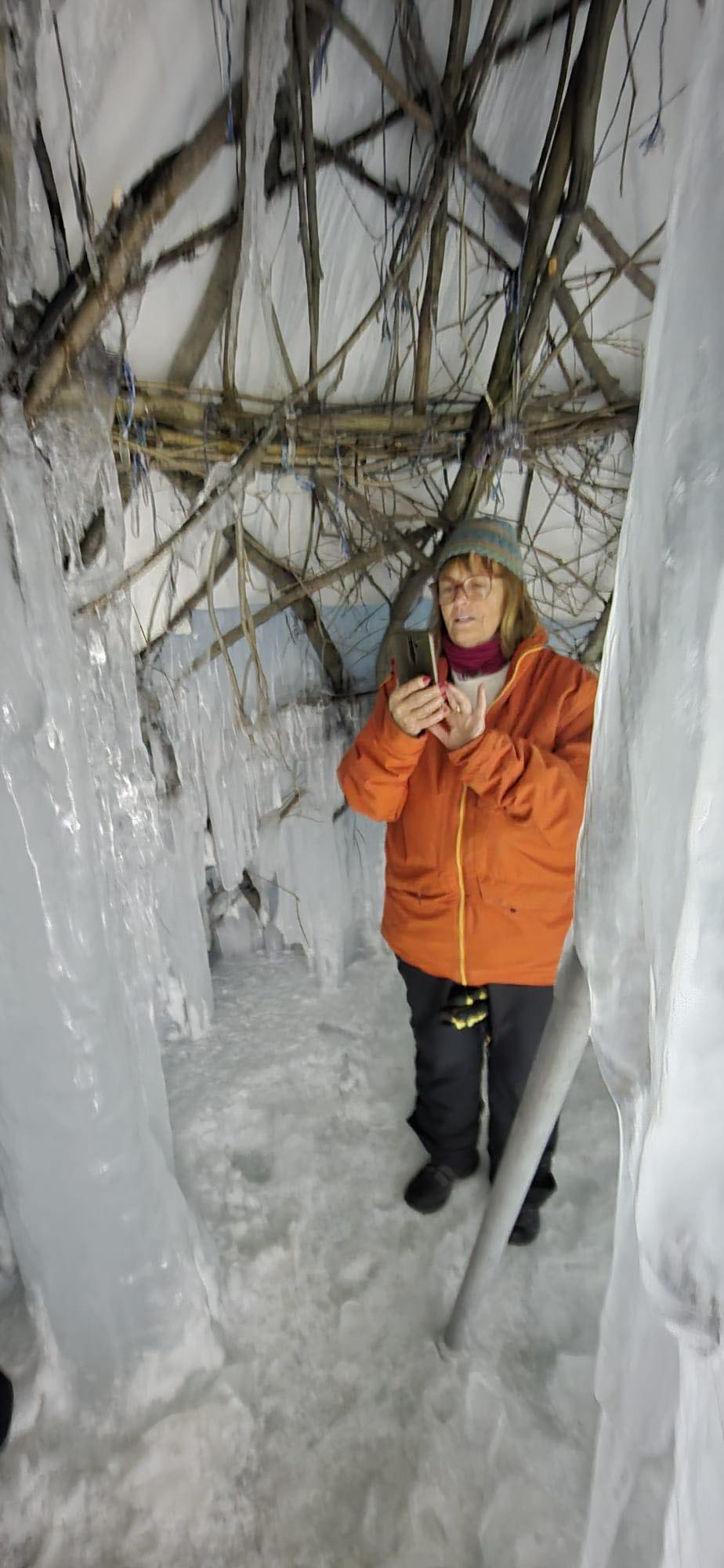
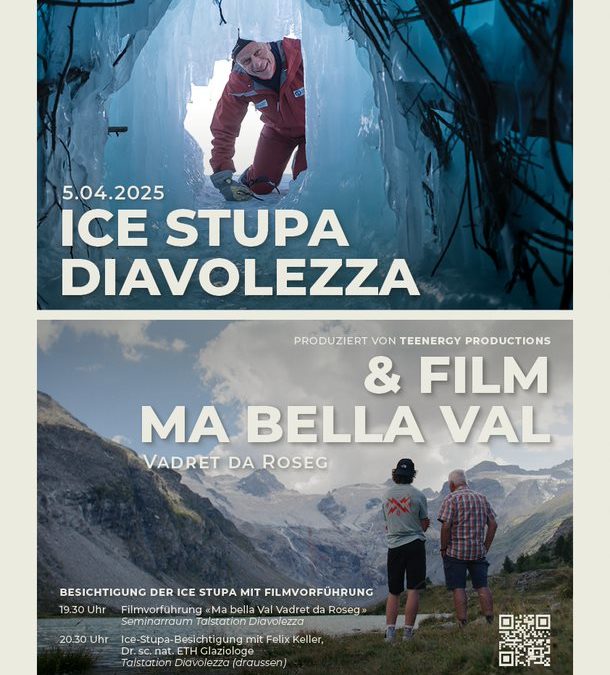
Ice Stupa Festival Diavolezza
The impressive Ice Stupa at the Diavolezza valley station has been standing since October 2024 and has grown quite a bit since then. The Ice Stupa is now over 15 meters high and can also be viewed from the inside. An Ice Stupa tour and film screening of “Ma bella Val Vadret da Roseg” will take place on Saturday, April 5.
The program starts at 7.30 pm with the film screening “Ma bella Val Vadret da Roseg”. The short film by production company Teenergy tells the story of glacier melting, which is being researched in the Bernina massif using innovative solutions, as well as Engadin culture, tourism and skiing. The film will be shown in the seminar room at the Diavolezza valley station. The tour of the Ice Stupa will then begin at 8.30 pm.
Information about the event can be found on the flyer below and via the QR code on the flyer. Registration for the event is not required.
We look forward to seeing you at the event.
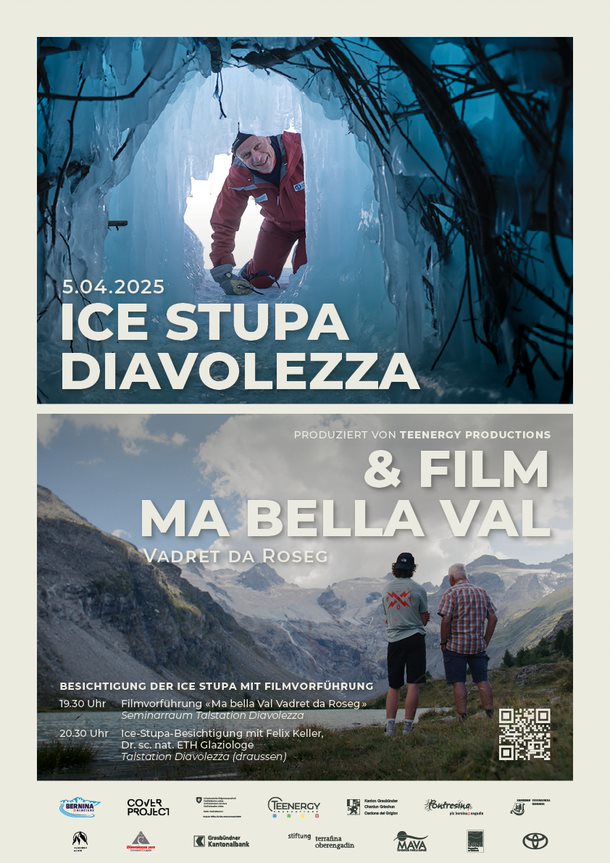

From discussions to concrete action
Last Friday and Saturday was the first World Glacier Day and World Water Day. On these two days, an important event took place at the UNESCO headquarters in Paris. The focus was on the increasing threat of glacier melt and its impact on water security, communities and ecosystems. With glaciers melting at record rates, the event highlighted the importance of glaciers as the “water towers of the world” for the billions of people who depend on them.
Leading politicians, scientists, civil society representatives and stakeholders have come together to discuss the importance of glaciers for global water systems, their impact on ecosystems, sea levels and society, and to promote measures to protect water supplies and glaciers for future generations.
Last Friday and Saturday was the first World Glacier Day and World Water Day. On these two days, an important event took place at the UNESCO headquarters in Paris. The focus was on the increasing threat of glacier melt and its impact on water security, communities and ecosystems. With glaciers melting at record rates, the event highlighted the importance of glaciers as the “water towers of the world” for the billions of people who depend on them.
Leading politicians, scientists, civil society representatives and stakeholders have come together to discuss the importance of glaciers for global water systems, their impact on ecosystems, sea levels and society, and to promote measures to protect water supplies and glaciers for future generations.

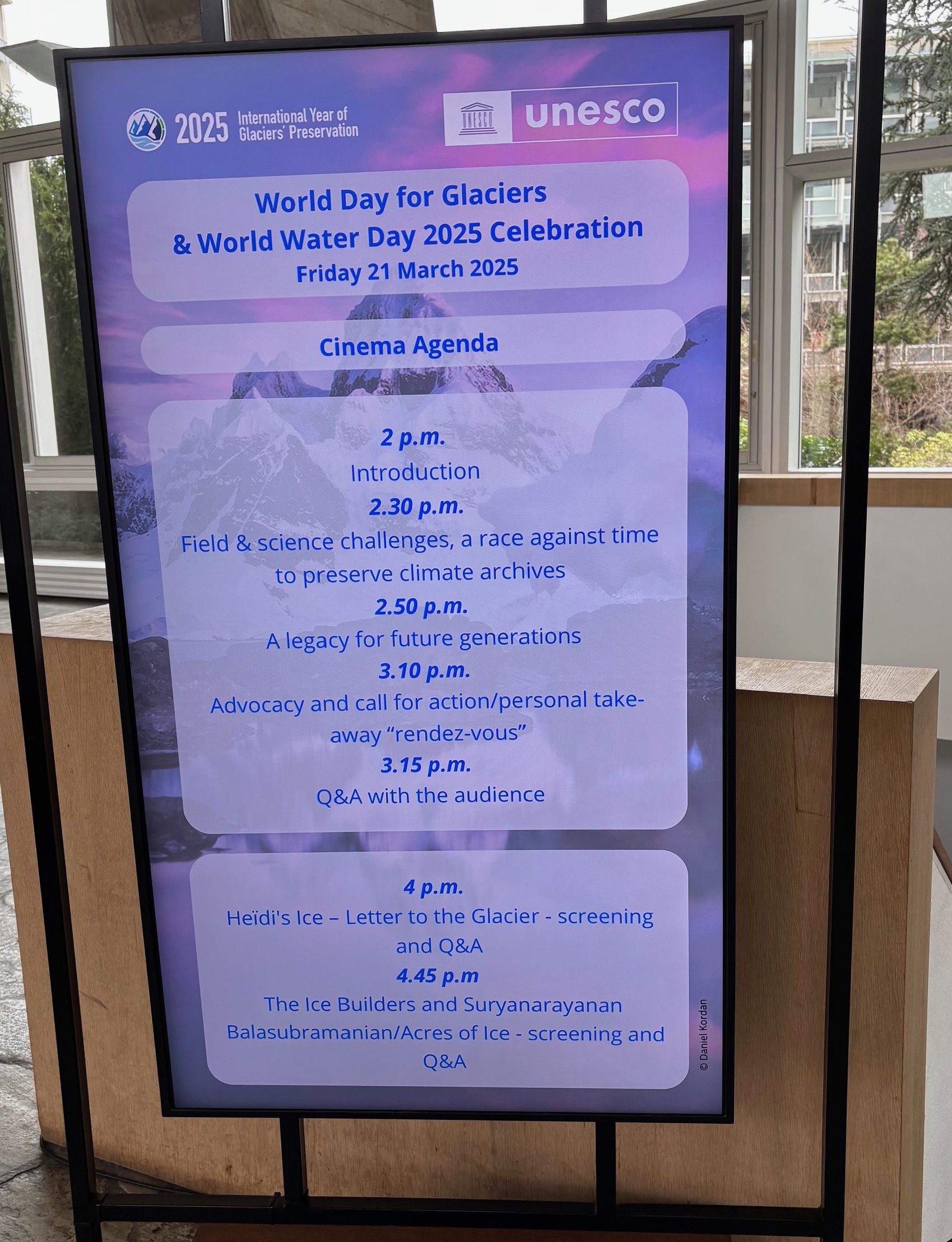
Thomas Spiegelberg, President of the Cover Project Foundation, represented the foundation during these two days in Paris. For him, it was two interesting days with many forums in which it was repeatedly expressed that there was no more time for discussion, but that action and implementation were needed. Scientists have clearly demanded that research should be intensified and at the same time a language must be found that translates the results and the knowledge gained into a simple and understandable way, otherwise it will not reach the people and regions affected. This is where visual language comes into play, as it is one of the many ways of making scientific content accessible and comprehensible.
Thomas Spiegelberg, President of the Cover Project Foundation, represented the foundation during these two days in Paris. For him, it was two interesting days with many forums in which it was repeatedly expressed that there was no more time for discussion, but that action and implementation were needed. Scientists have clearly demanded that research should be intensified and at the same time a language must be found that translates the results and the knowledge gained into a simple and understandable way, otherwise it will not reach the people and regions affected. This is where visual language comes into play, as it is one of the many ways of making scientific content accessible and comprehensible.
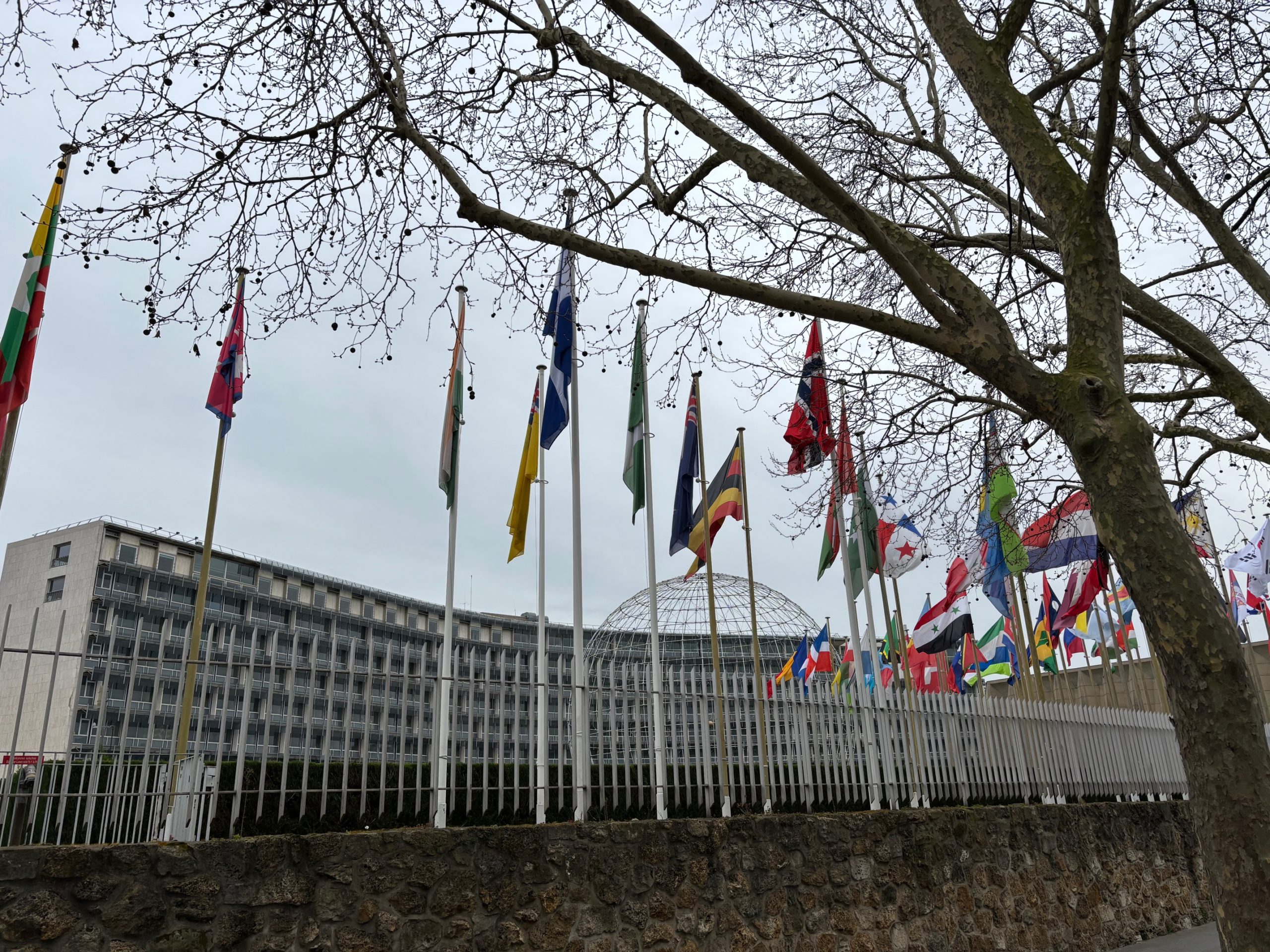
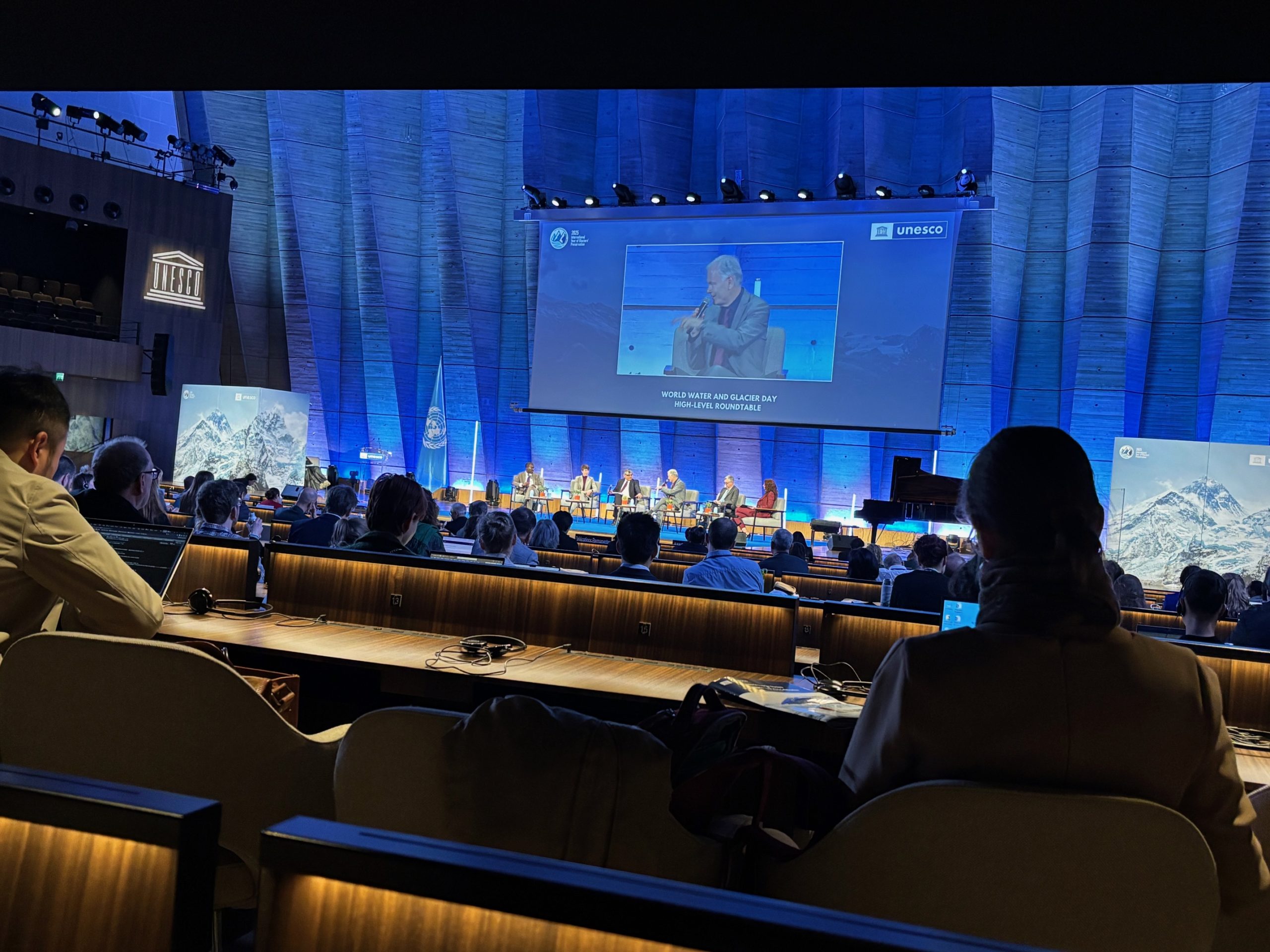
The Cover Project Foundation's contribution to the discussion on the film «The Ice Builder’s and Suryanarayanan» on Friday, March 21, was aimed precisely in this direction. They were able to show the numerous participants that the University of Ladakh with Sonam Wanchuk and Suryanarayanan Balasubramanian and the Academia Engadina with Felix Keller and the Cover Project Foundation have been actively working together for ten years to find solutions and implement them on an ongoing basis. Examples of this include microplastic-free fleece for covering glaciers and the support and development of a low-energy snow rope system for making snow on glaciers using glacier dew or side water.
The Cover Project Foundation's contribution to the discussion on the film «The Ice Builder’s and Suryanarayanan» on Friday, March 21, was aimed precisely in this direction. They were able to show the numerous participants that the University of Ladakh with Sonam Wanchuk and Suryanarayanan Balasubramanian and the Academia Engadina with Felix Keller and the Cover Project Foundation have been actively working together for ten years to find solutions and implement them on an ongoing basis. Examples of this include microplastic-free fleece for covering glaciers and the support and development of a low-energy snow rope system for making snow on glaciers using glacier dew or side water.
During these two days, it once again became clear how important it is that we all - scientists, foundations and society - pull together to find sustainable solutions. It is not enough to just talk - we have to take action, and that is exactly what we are doing.
During these two days, it once again became clear how important it is that we all - scientists, foundations and society - pull together to find sustainable solutions. It is not enough to just talk - we have to take action, and that is exactly what we are doing.
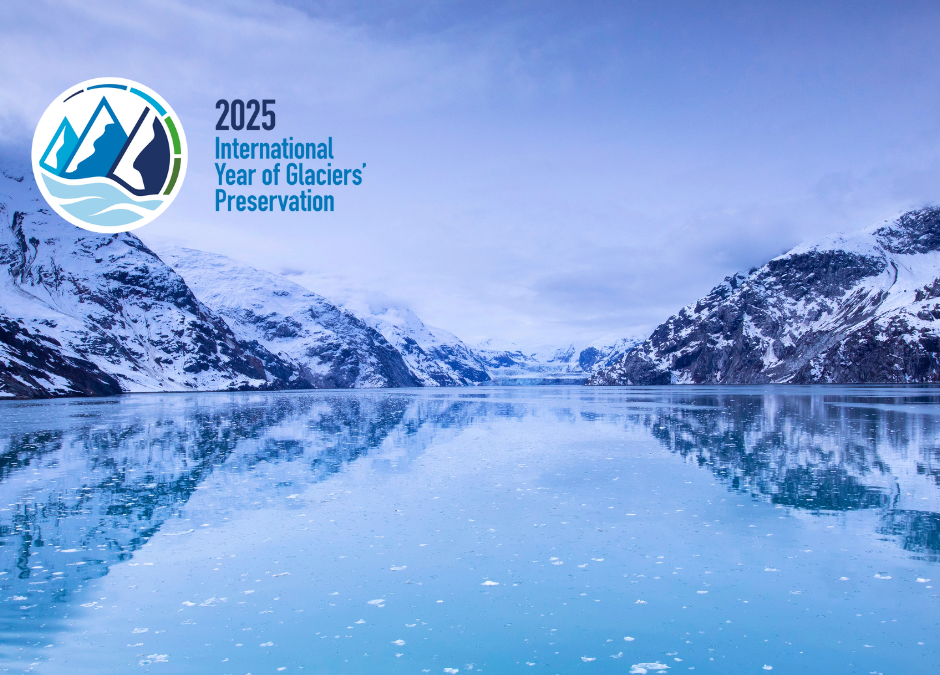
Friday March 21, 2025 marks the first World Glacier Day and World Water Day, a momentous occasion that calls on us all to reflect on the challenges facing glaciers and water resources. With the effects of climate change and increasing water scarcity, it is important that we take action to preserve these natural resources.
On this day, the Cover Project Foundation will participate in a panel discussion on ''Ice Stupas'' in Paris. In addition, a report on the topic of snow rope and ice stupa from the Engadin, Corvatsch and Diavolezza with Dr. Felix Keller will be broadcast in the evening on ARTE Journal at 7.20 pm. You can find more information about Friday and the Cover Project Foundation in the following newsletter:
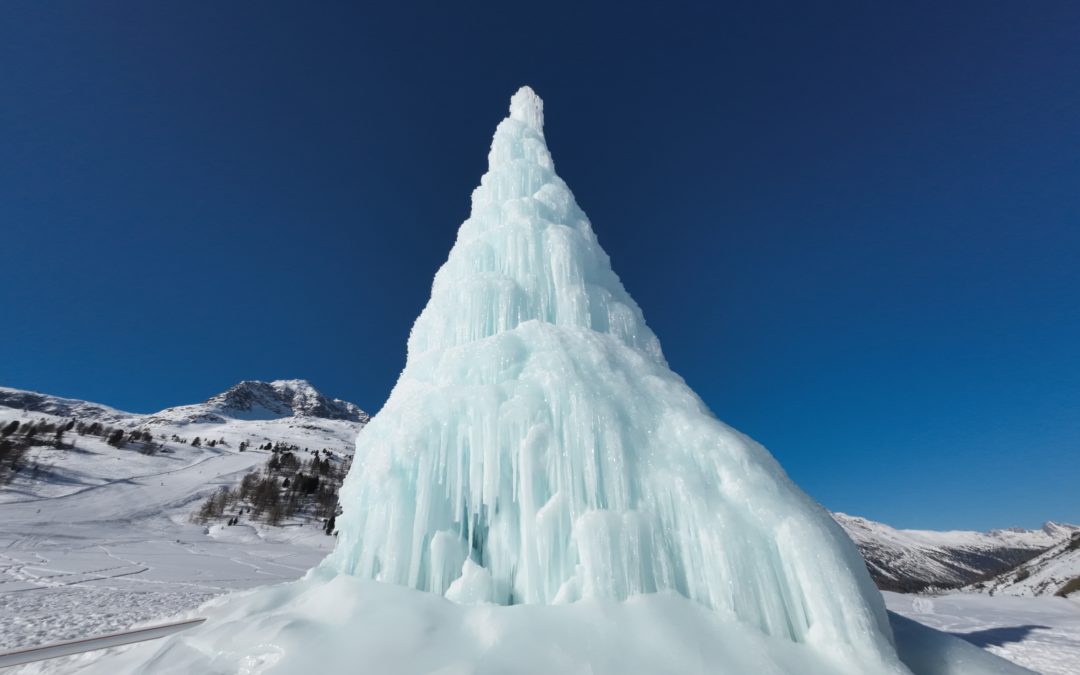
In October, we wrote about the construction of the Ice Stupa at the Diavolezza valley station. Over the months, the Ice Stupa has grown in size and ice mass thanks to the weather conditions and is now 15 meters high.
The construction of an Ice Stupa at the Diavolezza valley station has taken place every year since 2021. In the past, we have repeatedly had to deal with freezing problems with the water pipes. The main problem was that frozen water pipes were almost impossible to unblock. Thanks to the further development of technology, the watering system has been improved. Small heaters were fitted to the water pipes to ensure that all important points were free of ice before switching on. Since then, there have been no more problems and the Ice Stupa can therefore grow even bigger.
Recent Comments